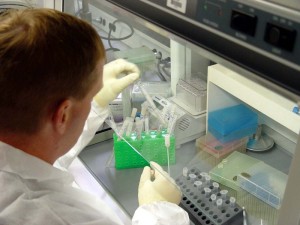 Zistboom:�Iranian textile engineers from Islamic Azad University�s Science and Research Branch in Tehran have succeeded in producing filters with active carbon and silver nanoparticle coatings that are capable of absorbing chemical pollutants and microbes that carry contagious diseases.
Zistboom:�Iranian textile engineers from Islamic Azad University�s Science and Research Branch in Tehran have succeeded in producing filters with active carbon and silver nanoparticle coatings that are capable of absorbing chemical pollutants and microbes that carry contagious diseases.Results of the research can help design masks used in medical and industrial sectors, as well as high-performance filters in industries, such as automobile manufacturing, steel, cement, petroleum, gas and petrochemicals, Fars News Agency reported.
In this research, the filter was produced by using polypropylene fibers through layer needle-punch method. In the next stage, a solution of active carbon was made by using distilled water and the material was coated on the texture-free layer by using foulard.
A foulard is a lightweight fabric, either twill or plain-woven, made of silk or a mix of silk and cotton.
Layers were put in the oven to be dried after being treated, which were sprayed in the next stage by using various concentrations of nanosilver solutions. The final filter obtained from the experiment was subjected to various tests to measure its performance against chemical and microbial pollutants.
Results of the research showed that the polypropylene layer coated with silver nanoparticles could deactivate microorganisms such as Staphylococcus aureus and Escherichia coli.
The coating of layer with active carbon results in the absorption of polluting gases, including NO, CO and NO2. The simultaneous presence of active carbon particles and silver nanoparticles on the surface of the polypropylene film decreases the antimicrobial activity of silver particles. However, no significant reduction was observed in the absorption of active carbon
It can be concluded that to obtain the two desired effects, which are antimicrobial properties and absorption of pollutants, active carbon particles and silver nanoparticles should be placed on two different sides of the filter.
Results of the research have been published in the Journal of Industrial Textiles, vol. 42, issue 3, pp. 219-230.
By Zistboom
The Iran Project is not responsible for the content of quoted articles.










